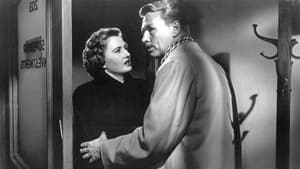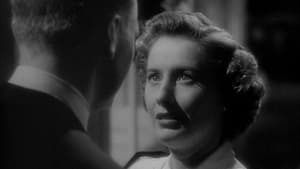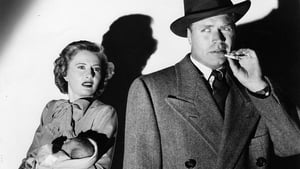Contact: info@alwanfilm.com
Video Sources 0 Views
Synopsis
No Man of Her Own 1950 Colorized Review: A Noir Classic in Color

Introduction
One of the quintessential examples of film noir, No Man of Her Own (1950) stands out for its suspenseful storytelling, captivating performances, and exploration of complex moral themes. Directed by the brilliant Mitchell Leisen, this classic adaptation of Cornell Woolrich’s novel I Married a Dead Man features Barbara Stanwyck in one of her most nuanced roles. Originally filmed in black and white, No Man of Her Own was later colorized, adding a new layer to its dark, atmospheric visuals. In this article, we will explore how the colorized version of No Man of Her Own enhances the film noir aesthetic and impacts the viewing experience. We’ll also dive into the film’s storyline, performances, and lasting influence on the noir genre.
Check The Full Colorized Movies List
Check Our Colorized Movies Trailer Channel
Understanding No Man of Her Own 1950 Colorized: Director, Cast, and Genre
Mitchell Leisen’s Directorial Vision
Director Mitchell Leisen, known for his refined cinematic style and ability to bring depth to genre films, masterfully crafted No Man of Her Own to be both visually arresting and emotionally gripping. Leisen approached the story with a keen eye for character development and atmosphere, immersing viewers in a world of deception and suspense. His direction brings out the intense emotional drama underlying the noir themes, capturing the tension and vulnerability of the characters in a way that is both thrilling and deeply human.
The Iconic Performance of Actors
Barbara Stanwyck shines in her role as Helen Ferguson, a woman caught in a desperate situation. Her performance is a testament to her range as an actress, portraying Helen’s fear, resilience, and inner strength as she navigates the complexities of her identity and her moral choices. Stanwyck’s portrayal is compelling and deeply affecting, bringing a sense of authenticity to the character’s plight.
Supporting her is John Lund, who plays Bill Harkness, a member of the wealthy family Helen becomes entangled with. Lund’s portrayal adds to the film’s suspense, as his character grapples with his growing affection for Helen while being unaware of her true identity. Together, Stanwyck and Lund create a dynamic that is filled with tension and emotional depth, enhancing the film’s noir atmosphere.
Noir Elements and Genre Conventions
No Man of Her Own is firmly rooted in the film noir genre, characterized by its dark, suspenseful tone, morally ambiguous characters, and fatalistic worldview. Like many noirs, it deals with themes of identity, deception, and desperation. The film’s atmosphere is thick with tension, and the story unfolds in a way that keeps audiences guessing until the very end. By staying true to these conventions, No Man of Her Own holds a unique place within the noir canon as one of the more psychologically intense entries in the genre.
Exploring the World of No Man of Her Own 1950 Colorized: Plot and Characters
Plot Summary and Key Moments
The plot of No Man of Her Own revolves around Helen Ferguson, a pregnant woman abandoned by her lover and left with nowhere to turn. Desperate and alone, she boards a train, where she meets a wealthy couple, the Harknesses, who are expecting a child of their own. When a tragic accident occurs, Helen seizes the opportunity to assume the identity of the deceased Mrs. Harkness, taking her place in the Harkness family. As she is welcomed into her new life, Helen becomes increasingly entangled in a web of lies, guilt, and fear, realizing that her past is never truly behind her.
The suspense builds as Helen struggles to maintain her facade, while falling for Bill Harkness, who believes her to be his sister-in-law. Helen’s internal conflict and the constant threat of exposure create a palpable tension that keeps viewers on the edge of their seats.
Complex Characters and Moral Dilemmas
The characters in No Man of Her Own are deeply flawed and morally complex, particularly Helen, who embodies the ambiguity central to film noir. Her decision to assume another woman’s identity is driven by desperation, and while she initially rationalizes it, she soon becomes consumed by guilt and fear. The character’s evolution highlights the psychological and emotional toll of living a lie, making her a sympathetic yet deeply flawed protagonist.
Bill Harkness, on the other hand, represents a source of stability and genuine affection in Helen’s turbulent world. His role adds complexity to Helen’s situation, as her feelings for him challenge her resolve to maintain the charade. This moral complexity gives the film its tension and emotional depth, making it a standout in the noir genre.
The Art of Film Colorization
Understanding the Colorization Process
Colorization is a transformative process that involves adding color to black-and-white films, either manually or digitally. When it comes to films like No Man of Her Own, colorization can bring new life to the visuals and make the film more accessible to modern audiences. The process involves painstakingly selecting and applying colors that enhance the film’s scenes while preserving the mood and aesthetic of the original.
For No Man of Her Own, the colorization was carefully done to maintain the dark, moody atmosphere of the film noir aesthetic. Shadows, highlights, and subtle tones were added with great attention to detail, ensuring that the colorized version remained true to the film’s original look and feel.
Evolution of the Technique
Early colorization techniques were limited by technology, but modern advancements have made it possible to colorize films with a high degree of accuracy and realism. Today, digital tools allow for precise color choices that can enhance the visual storytelling without compromising the director’s vision. The colorized version of No Man of Her Own benefits from these advancements, offering a fresh visual experience that maintains the film’s tension and atmosphere.
Early Colored Films: A Brief History
The Beginnings of Color in Cinema
The evolution of color in cinema began with experimental techniques in the early 20th century, such as hand-tinting and toning. Technicolor, a breakthrough process introduced in the 1930s, brought vibrant color to the screen and transformed the film industry. This new technology allowed filmmakers to explore color as a narrative tool, using it to evoke emotion and enhance the storytelling.
While No Man of Her Own was initially filmed in black and white, its later colorization is a nod to these early innovations in color cinema. The film’s noir elements, when colorized, highlight the impact of color on storytelling in classic films.
No Man of Her Own and Its Early Colored Version
Decision to Release a Colorized Edition
The colorized version of No Man of Her Own was released to introduce the film to new generations, providing an updated viewing experience while preserving its classic elements. This decision reflects a growing trend of revisiting classic films with colorization to appeal to audiences who may be more accustomed to color cinema. By offering a colorized version, the creators hoped to enhance the film’s appeal and underscore its emotional impact.
Impact on the Film’s Atmosphere and Tone
The colorized edition of No Man of Her Own brings new depth to its visual storytelling, highlighting details that may have been less noticeable in black and white. The added color enhances the settings, costumes, and characters, creating a more immersive experience. However, it also raises questions about how colorization impacts the film’s noir elements, as the genre traditionally relies on stark contrasts and shadows.
The Debate Over Film Colorization
Controversy and Artistic Integrity
The colorization of classic black-and-white films has long been a topic of debate. Critics argue that colorizing films can alter the original artistic intent, especially in genres like film noir, where shadows and contrast are integral to the storytelling. Fans of classic cinema often feel that colorization detracts from the authenticity of the film and its historical context.
Advocates of colorization, however, believe that it can attract new audiences to classic films, making them more visually appealing and accessible. For No Man of Her Own, the colorized version offers an opportunity to engage viewers who might otherwise overlook this gem of a film.
Examining No Man of Her Own as an Early Colored Film
Does Color Enhance or Distract?
The colorized version of No Man of Her Own provides a unique perspective on the film’s visual elements, bringing out details that may have been less prominent in black and white. The added color enhances the film’s atmosphere, particularly in scenes where emotions are heightened. However, for some, the color may detract from the noir aesthetic, as the stark contrasts of black and white are an essential part of the genre.
Influence and Legacy: No Man of Her Own 1950 Colorized’s Impact on Cinema
The Film’s Role in Noir Cinema
No Man of Her Own has left an indelible mark on the noir genre, influencing subsequent films with its exploration of identity, deception, and moral ambiguity. The film’s suspenseful storytelling and complex characters have inspired filmmakers and continue to resonate with audiences. Its success demonstrated the power of noir storytelling and helped cement Barbara Stanwyck’s reputation as one of the genre’s leading actresses.
Director’s Cinematic Legacy: Beyond No Man of Her Own 1950 Colorized
Mitchell Leisen’s Influence on Film
Mitchell Leisen’s directorial career spanned multiple genres, showcasing his versatility and mastery of cinematic storytelling. His work on No Man of Her Own solidified his reputation as a skilled filmmaker capable of creating suspenseful, emotionally engaging stories. Leisen’s influence can be seen in his attention to character development, his meticulous approach to visual storytelling, and his impact on the noir genre.
Themes Explored in No Man of Her Own 1950 Colorized
Deception, Identity, and Morality
No Man of Her Own delves into themes of deception, identity, and morality, exploring the lengths to which people will go to escape their past and find security. Helen’s decision to assume another identity speaks to the universal desire for reinvention, while her subsequent guilt and fear highlight the moral consequences of deception. These themes add depth to the film, elevating it beyond a simple suspense story.
Reception and Controversy Surrounding No Man of Her Own 1950 Colorized
Initial Reviews and Audience Reactions
Upon release, No Man of Her Own was praised for its suspenseful plot and Stanwyck’s performance. However, the colorized version sparked debate, with some praising its visual appeal and others questioning its impact on the film’s authenticity. The controversy reflects the broader debate over colorization in cinema.
Where to Watch No Man of Her Own 1950 Colorized Online
No Man of Her Own is available on streaming platforms like Amazon Prime Video and Turner Classic Movies, in both its original and colorized versions. The film can also be found on DVD and Blu-ray for classic cinema enthusiasts.
FAQs About No Man of Her Own 1950 Colorized
Q: What is No Man of Her Own (1950) about?
A: The film follows Helen Ferguson, a woman who assumes another identity after a train accident, only to find herself caught in a web of deception and guilt.
Q: Why was No Man of Her Own colorized?
A: The colorized version was created to appeal to modern audiences and offer a new perspective on the classic film.
Q: Who stars in No Man of Her Own?
A: Barbara Stanwyck stars as Helen Ferguson, with John Lund as Bill Harkness.
Conclusion
No Man of Her Own (1950) remains a standout in the film noir genre, offering a suspenseful, emotionally charged story that explores themes of deception, identity, and morality. Mitchell Leisen’s direction and Barbara Stanwyck’s powerful performance make this film a must-watch for fans of classic cinema. The colorized version brings new life to the film’s visuals, adding depth to the experience while sparking debate about the merits of colorization. Whether viewed in black and white or color, No Man of Her Own continues to captivate audiences and exemplifies the timeless appeal of noir storytelling.


















